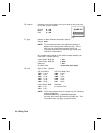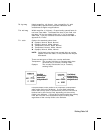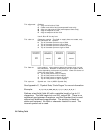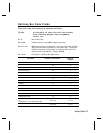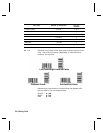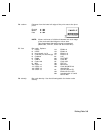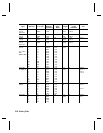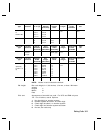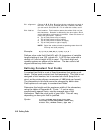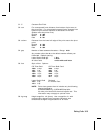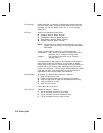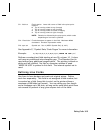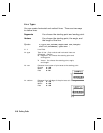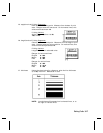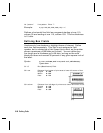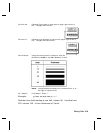
B11. alignment Choose
L
,
R
,
C
,
B
or
E
to align the bar code data correctly in
the field. For I2 of 5, Code 39 (Mod 43), Codabar, and MSI,
you can use
L
,
R
,
C
,
B
or
E
. For all other bar codes, use
L
.
B12. field rot Field rotation. Field rotation rotates the whole field, not just
the characters. Rotation is affected by the pivot point, which
varies depending on how text is justified. Lower left corner of
field is the pivot point. Options:
0
Top of field points to top of supply
1
Top of field points to left of supply
2
Top of field points to bottom of supply
3
Top of field points to right of supply
NOTE:
Serial bar codes printed at speeds greater than 2.5
IPS may not scan properly.
Example:
B,3,12,V,150,40,1,2,80,7,L,0 p
Defines a bar code field (field #3) with 12 characters of variable
length starting at row 150, column 40. A UPCA bar code with a
density of 2 and a height of 80 is used. The check digit and
number system are shown at the bottom. The bar code is left
aligned without any field rotation.
Defining Constant Text Fields
A constant text field is a set of fixed characters that prints on all
labels. Define each constant text field separately. This field is not
assigned a field number, but is counted as a field (keep this in
mind, as the printer allows a maximum of
100
fields per format).
The characters in this field cannot be changed by batch data.
Field options do not apply to constant text fields.
Determine the height and the maximum width of the characters,
using the tables in Appendix B, "Fonts." If you’re using
proportionally spaced fonts, use the average size of the
characters. Mark the pivot point of your field. This will vary,
depending on how your field is justified.
Syntax
C,row,column,gap,font,hgt mag,
wid mag,color,alignment,char rot,
field rot,"fixed char",sym set p
3-12
Defining Fields



